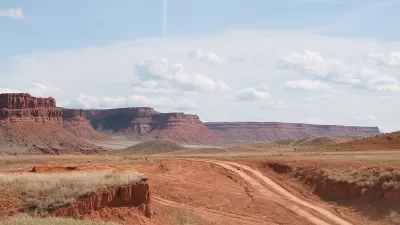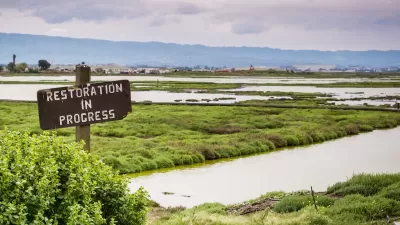California State Legislature committee approved AB 3030 in May, adopting a plan to save 30% of land and sea from development by the year 2030. The Convention on Biological Diversity is likely to follow in adopting the 30 by 30 framework.

Last year, an international group of scientists published an article in Science Advances proposing a "Global Deal for Nature," a plan to save biodiversity by protecting nearly 30% of the world's waters and lands by 2030. "They wrote that setting aside nearly one-third of the planet from human development could avert 'points of no return' for many species and ecosystems," reports Sammy Roth. The Convention on Biological Diversity is expected to adopt the preventative plan.
Roth reflects: "You may have heard the statistic that the U.S. loses a football field’s worth of nature every 30 seconds. The data point can start to sound meaningless if you hear it too often, but stop and think about it. Every 30 seconds? That’s astounding." California's recently Assembly Bill 3030 cites the statistic and sets state-wide legislation adopting the framework.
Global Deal for Nature authors consider the "30 by 30" goal as a starting point, hoping to extend the effort to 50% by 2050.
FULL STORY: Boiling Point: The ’30 by 30' plan to save the natural world

Alabama: Trump Terminates Settlements for Black Communities Harmed By Raw Sewage
Trump deemed the landmark civil rights agreement “illegal DEI and environmental justice policy.”

Study: Maui’s Plan to Convert Vacation Rentals to Long-Term Housing Could Cause Nearly $1 Billion Economic Loss
The plan would reduce visitor accommodation by 25% resulting in 1,900 jobs lost.

Why Should We Subsidize Public Transportation?
Many public transit agencies face financial stress due to rising costs, declining fare revenue, and declining subsidies. Transit advocates must provide a strong business case for increasing public transit funding.

Paris Bike Boom Leads to Steep Drop in Air Pollution
The French city’s air quality has improved dramatically in the past 20 years, coinciding with a growth in cycling.

Why Housing Costs More to Build in California Than in Texas
Hard costs like labor and materials combined with ‘soft’ costs such as permitting make building in the San Francisco Bay Area almost three times as costly as in Texas cities.

San Diego County Sees a Rise in Urban Coyotes
San Diego County experiences a rise in urban coyotes, as sightings become prevalent throughout its urban neighbourhoods and surrounding areas.
Urban Design for Planners 1: Software Tools
This six-course series explores essential urban design concepts using open source software and equips planners with the tools they need to participate fully in the urban design process.
Planning for Universal Design
Learn the tools for implementing Universal Design in planning regulations.
Smith Gee Studio
Alamo Area Metropolitan Planning Organization
City of Santa Clarita
Institute for Housing and Urban Development Studies (IHS)
City of Grandview
Harvard GSD Executive Education
Toledo-Lucas County Plan Commissions
Salt Lake City
NYU Wagner Graduate School of Public Service





























